Disclosure: Please note that some links are affiliate links, and at no additional cost to you, we earn a commission if you make a purchase.
If you would like to support this website in some way, using these links will help do exactly that.
Wartburg Castle is more than just a castle, it's a symbol of German unity, and sometimes called the ‘most German castle’, similarly to how (a previous post from us) St. Peter in Frankfurt is called the ‘most German church’. It's a fair assessment when you discover how much happened at this castle! Here are tidbits of history you need to know to get the most out of your visit of Wartburg Castle.
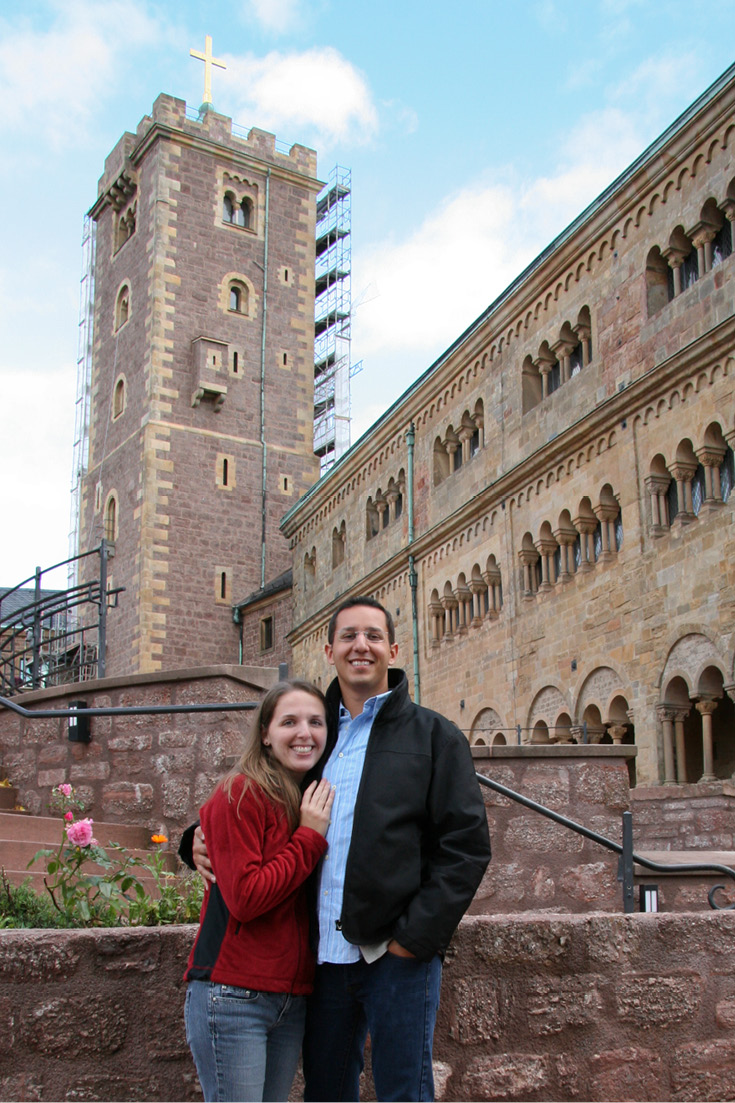
Medieval Hilltop Castle Architecture
Any self-respecting medieval castle is built on a hill, and Wartburg Castle is no different. Wartburg castle went through four periods of construction. Hang on to your chair, we’re also going to introduce German castle vocabulary words that might prove helpful during your visit. The German words, as always, will be italicized. The initial building period of the Palas (great hall building) was between 1157-1162. The Romanesque-period gate arch, located inside the Vorburg (front castle) is from 1200. The majority of the Vorburg, which includes the Ritterhaus (knight’s house), Torhaus (tower house), Vogtei (castle bailiff’s lodge), and the sentry walks are all timber framing and built in the late medieval time, 1478-1480. Finally, the last building period, the historicist (1853-1860), included the Bergfried (free-standing fighting tower), Neue Kemente (Fireplace Room), the Torhalle (porch), Dirnitz (heated hall building), Gadam (granary), and the Ritterbad (knight’s bath). During the historicist period the Palas was opulently furnished with the fantastical frescoes of Moritz von Schwind and the Festsaal (festival hall). In 1912-1914, the final addition of the Wartburg hotel was built.
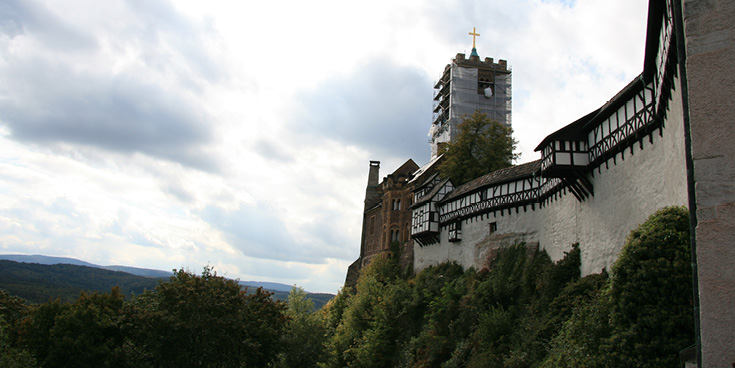
What is a Landgrave?
I wouldn’t be surprised if you had never heard of a landgrave before, which means ‘provincial count’. The title was first invented in 1131 solely for the German state of Thuringia, and intended to put landgraves on equal level with dukes, and ultimately could become imperial princes. Becoming a landgrave was in thanks for the dynasty’s help to Saxon Lothar von Süpplingenburg in the election of a king of Germany against Emperor Heinrich V.
If you ever wondered what your room would look like if you were a medieval princess, look no further! Named the Ruler’s Room, although the furniture is not original to the room itself, it's been collected, the effect is jaw dropping. The views of the Thuringia forest from the windows, to the chandelier and the stencil ceilings, it's decadent.
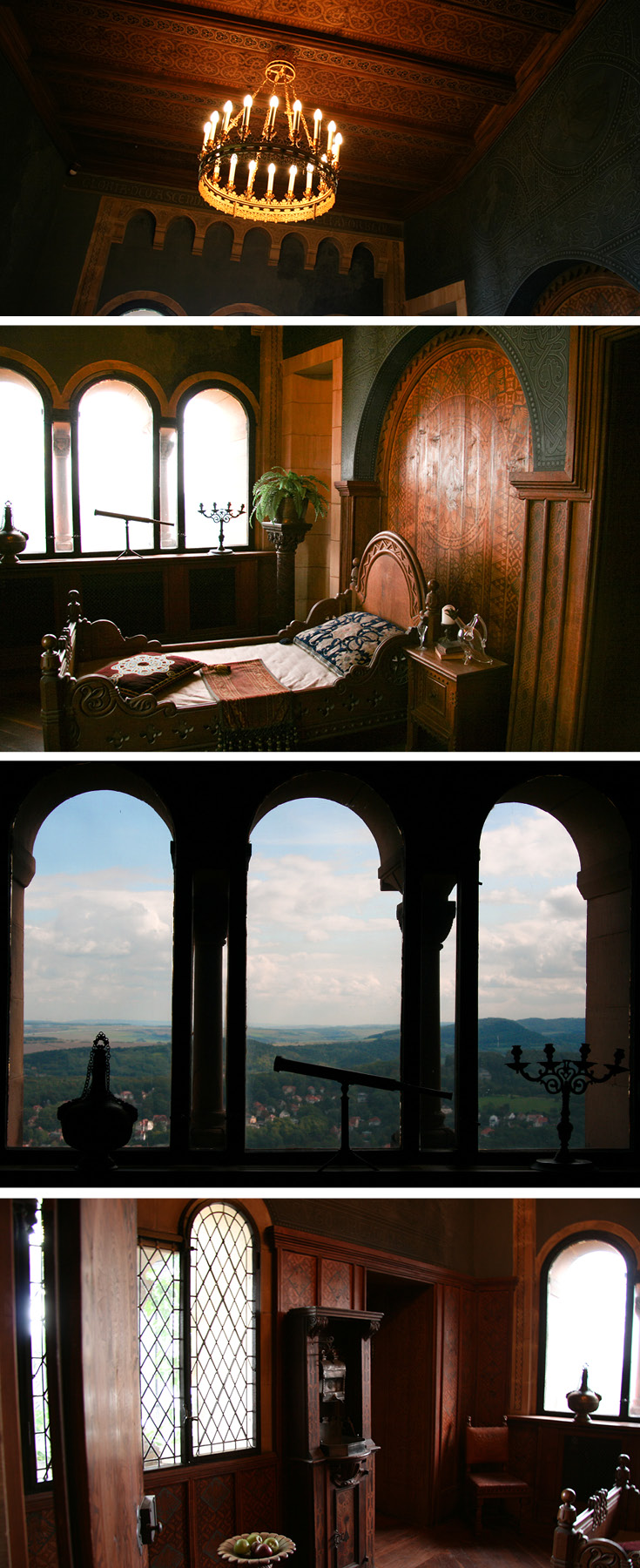
What are Minnesingers?
A minnesinger is a 12th-14th century German lyric poet and singer who performed songs of courtly love. All medieval courts had minnesinger contests, but it's alleged that Wartburg Castle held the most famous contest of the age with the six most famous minnesingers of the time: Walther von der Vogelweide, Wolfram von Escheenbach, Reinmar von Zweter, Heinrich von Ofterdingen, Heinrich Schreiber, and Biterolf. When imagining a minnesinger, be on the lookout for one of their instruments in the museum, the Quinterne, a small lute, likely made from a single piece of maple in 1450 with the marks of Hans Oth of Nuremberg, a master craftsman of the time.
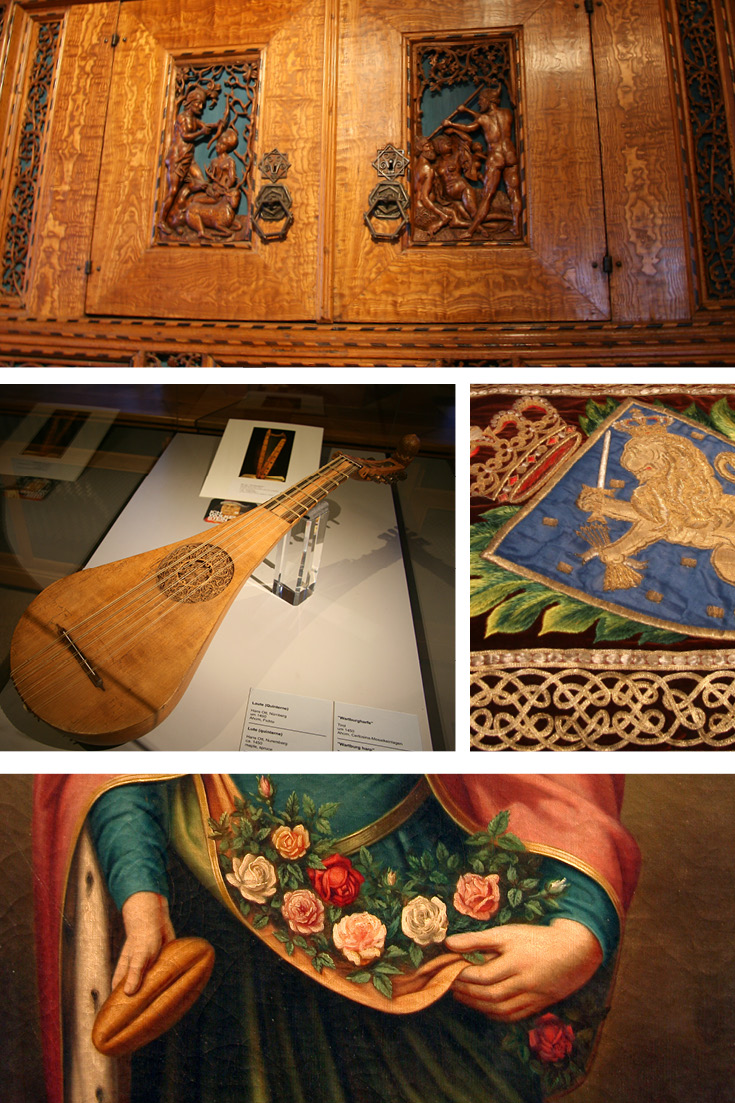
St Elizabeth
First, St Elizabeth lived here for most of her life. What you need to know is that Elizabeth was a Hungarian princess who was betrothed to Ludwig IV of the Ludovingians. She was sent to the castle to be groomed as a wife at age four. She gave everything she could to take care of the poor in the surrounding area. If you’d like to read more about St. Elizabeth and the miracles associated with her, click here and you’ll be redirected to a Catholic Encyclopedia article.
The Refuge of Martin Luther
The second reason the Wartburg is a religious destination, is because Martin Luther found refuge here. You can visit the room where he stayed. This is the place where he did some of his life’s best works and translated the New Testament from Greek to German. The castle is fortunate to have a copy from 1541 that belonged to Wolfgang Wesemer with an inscription on the inside cover by Luther himself and his collaborator Philipp Melanchthon.
1817 Wartburg Festival
Four years after the Battle of Nations in 1813, and the 300th anniversary of the Lutheran Reformation, student corporations met in Eisenach and marched to the Wartburg. They hosted speeches and symbolically burnt items. Five hundred students marched for the creation of a unified German Empire. It is said that one of the fraternity flags from the city of Jena that was carried during the march became the inspiration for the final German flag. You can read more about the stories behind the German flag in our earlier article here.
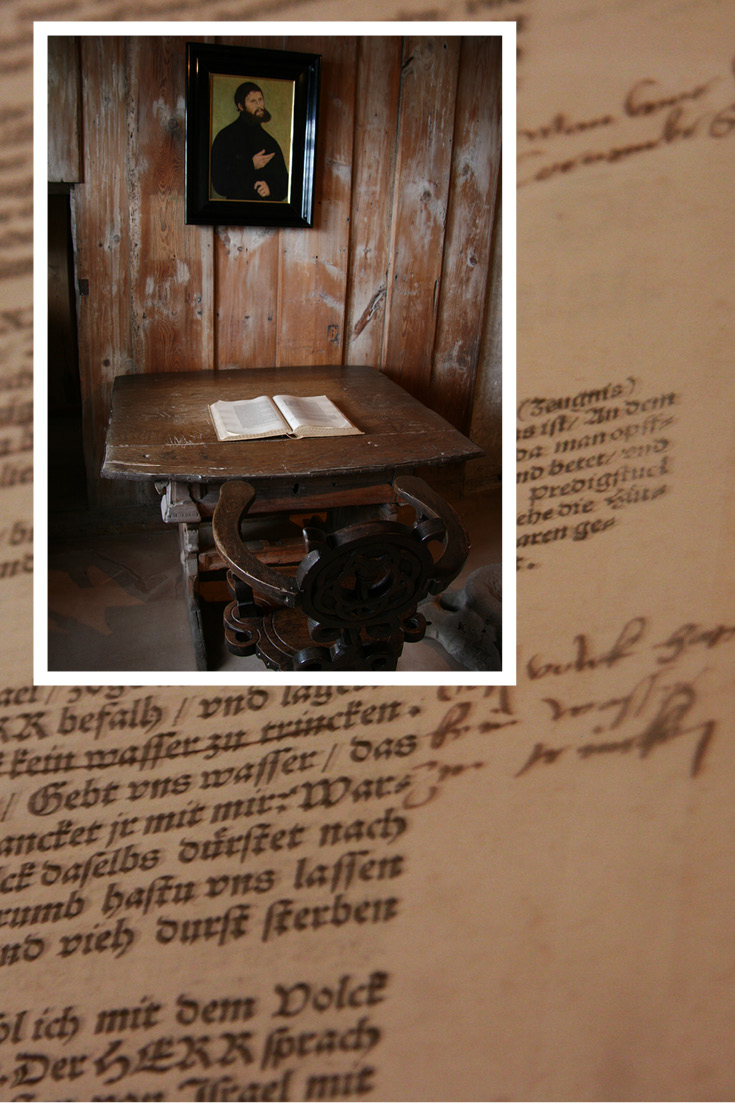
Historicism
Historicism is architecture inspired by and recreates another period’s architecture. In Wartburg Castle’s case, the Romantics were inspired by the medieval architecture and sought to recreate it and expand the castle in the same style. Often, when castles were expanded or renovated, they wanted to replace the out of fashion architecture, in this period they loved it and wanted more of it. Historicist architect Hugo von Ritgen lobbied passionately for the commission to restore and continue building.
Goethe & Museum Treasures
Johann Wolfgang von Goethe was emotionally impacted by the castle’s history; he demonstrated this through his writing, letters, and sketches. He hoped there would be a museum installed within the castle that would inspire even more pilgrims to visit. Inspired by Goethe’s idea for a museum and in Goethe’s memory, Grand Duchess Maria Pavlovna and her son Carl Alexander of Saxe-Weimar-Eisenach, began the process of a European art collection which would focus on the time period of the castle. Today, the Wartburg Art Museum has collected over 1,000 years of European art from the time of Wartburg Castle’s heyday.
Recommended Souvenir From Wartburg Castle
The souvenir to get from Wartburg is definitely the small booklet (60 pages) about the history of the castle, the architecture, and the legend of St. Elizabeth. The Wartburg, Part of the World’s Heritage by Günter Schuchardt, Translated by Margaret Marks. In such a slim, light volume, there’s a wealth of information alongside historical drawings, paintings, and color photos. Without it, I could not write this post with any credible facts.
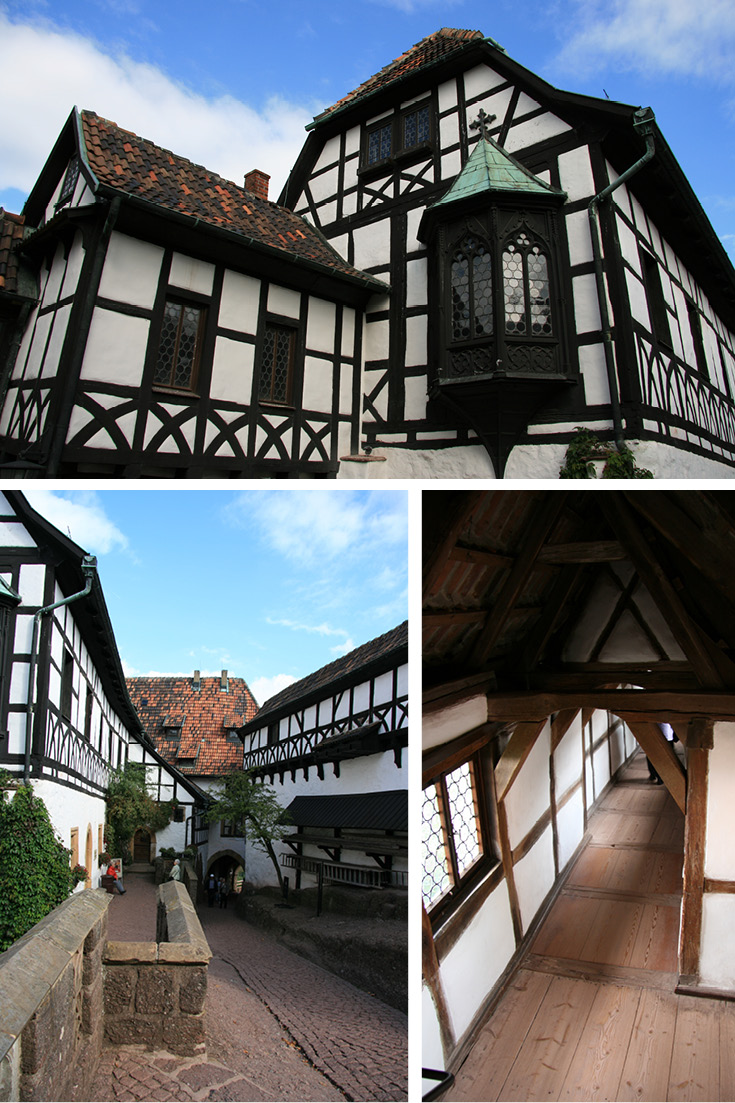
Still want to see more? There's certainly more to see! This is a nice video overview of the castle.
Follow Along
If you enjoyed this article, or these topics sound interesting to you, you'll love our weekly newsletter. You'll receive a free Germany Packing list for signing up, and you'll receive each week's newest posts every Friday. Thank you for reading!

